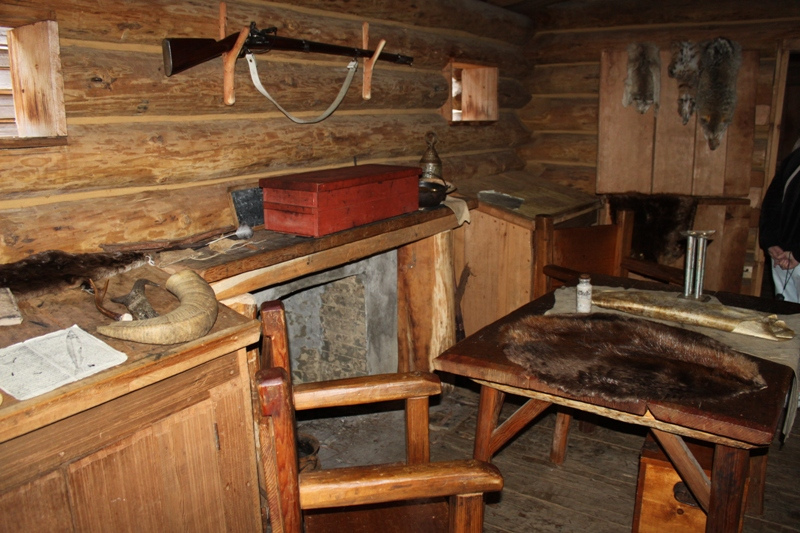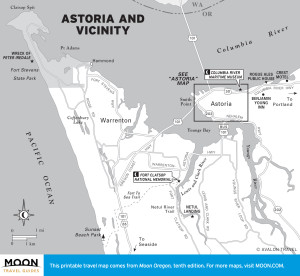
Located south of Astoria, Fort Clatsop is where the Corps actually spent the winter. Photo © Matt Howry, licensed Creative Commons Attribution.

Astoria and Vicinity
On November 2, 2004, President George W. Bush signed a bill into law to create the 59th national park in the United States. The Lewis and Clark National and State Historical Parks honor explorers Meriwether Lewis and William Clark, whose journey in 1804-1806 paved the way for the U.S. settlement of the West. The park focuses on the sites at the mouth of the Columbia River, where the Corps of Discovery spent the famously wet winter of 1805.The park is somewhat unusual in that it is essentially a rebranding of current National Park facilities and a federalization of current state parks. The new park includes a dozen sites linked to Lewis and Clark exploration, campsites, and lore. One of these, Fort Clatsop National Memorial, south of Astoria and where the Corps actually spent the winter, was already operated by the National Park Service, while Cape Disappointment State Park formerly Fort Canby State Park, on the Washington side of the Columbia, remains a Washington state park but is managed by the national park entity.
Besides these two existing facilities, units of the new national park include the Fort to Sea Trail, a path linking Fort Clatsop to the Pacific; Clarks Dismal Nitch, a notoriously wet campsite near the Washington base of the Astoria-Megler Bridge; Station Camp, another improvident campsite for the Corps; the Salt Works in Seaside, where the Corps boiled seawater to make salt; Netul Landing, the canoe launch area used by Lewis and Clark near Fort Clatsop; and a memorial to Thomas Jefferson yet to be constructed on the grounds of Cape Disappointment State Park.
The new national park also encompasses the existing Fort Columbia State Park in Washington, which preserves a turn-of-the-20th-century military encampment, and Fort Stevens, Sunset Beach, and Ecola State Parks in Oregon.
The national park designation changes little for these once disparate sites, at least in the near future. Fort Clatsop has been expanded to 1,500 acres, and the Lewis and Clark Interpretive Center at Fort Disappointment State Park was revamped. Visitors will mostly notice new and consistent signage throughout the park units. Ranger-guided hikes and living history reenactors promise to bring to life the famous, often very wet, events that took place here over 200 years ago.